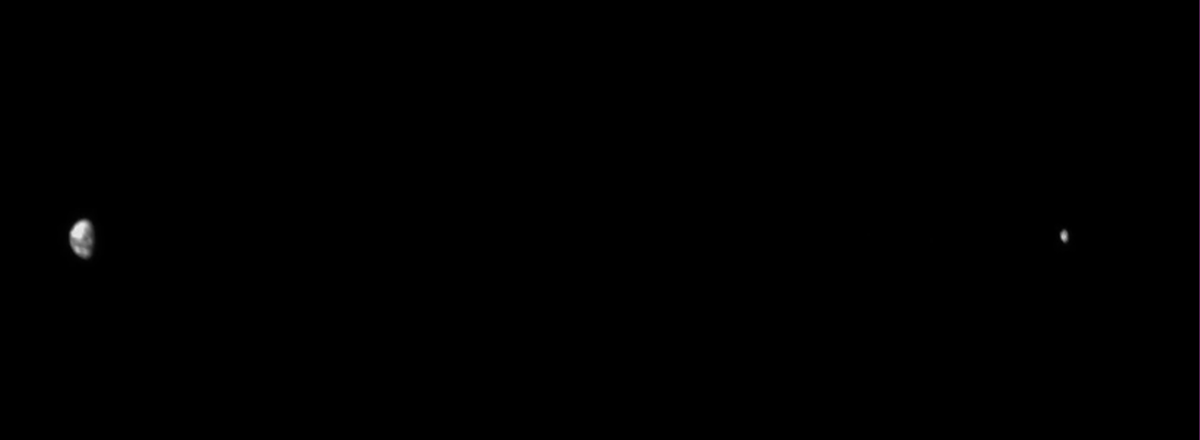NASA's Lucy Spacecraft Captured Lunar Eclipse From Space
Over the course of about three hours, the spacecraft made 86 1-millisecond exposures. They were then sent back to Earth to be combined into a video. In the resulting video, the Earth and its satellite can be seen about 360,000 km apart.

On May 15-16, 2022, NASA's Lucy probe was able to capture the lunar eclipse from an unusual angle in space while being at a distance of about a hundred million kilometers from Earth, which is equivalent to about 70% of the distance between our planet and the Sun.
Over the course of about three hours, the spacecraft made 86 1-millisecond exposures. They were then sent back to Earth to be combined into a video. In the resulting video, the Earth and its satellite can be seen about 360,000 km apart. The spacecraft was almost perpendicular to the line connecting the Earth and the Moon at the time of the eclipse, keeping both celestial bodies in view.
The unusual angle allowed the probe to record the temporary disappearance of the Moon at the beginning of the total darkening of the satellite. When the Moon entered the Earth's shadow, the L'LORRI onboard camera, which took pictures of the entire process, recorded the Moon fading completely, absorbed by the Earth's shadow.
Lucy is the first-ever mission to explore Jupiter's Trojan asteroids. The mission will last until 2033, and for the first time in history, will explore several of Jupiter's Trojan asteroids in close proximity.
Lucy will study a group of asteroids orbiting the largest planet of our solar system, Jupiter. The mission could help scientists shed light on how the solar system was formed. They believe that Trojan asteroids may be remnants of planetesimals, the building blocks of our solar system.

